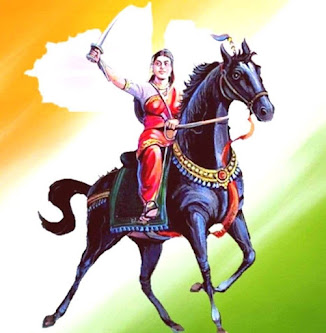AMRIT FESTIVAL OF INDEPENDENCE "A Tribute to Heroes of Indian Freedom Struggle"
India's Forgotten ...? Freedom Fighter...?
Rani Chennamma....?
'Lakshmibai of Karnataka....
Rani Chennamma, India's
first female freedom fighter, was a great warrior who fought for the
independence of her motherland with fearlessness, intelligence and courage. He
razed the British government with his skill around 1824. Twice the British army
had to beg for their lives in front of them. She is also called 'Lakshmibai of
Karnataka'. Due to the courage and valor of Rani Chennamma, she enjoys special
respect in different parts of the country especially in Karnataka and her name
is taken with respect. Even before the struggle of "Rani Laxmibai" of
Jhansi, "Rani Chennamma" had soured the teeth of the British in the
war. She was the first Indian ruler who led an armed rebellion against the
British East India Company. Even though his soldiers were less in number than
the British army and he was arrested but he is still remembered for leading the
rebellion against British rule. He first took an armed iron against the British
against the usurp policy.
Introduction
Chennamma was born on
23 October 1778 in Kakati to Ghulappa Desai. It is a small village in Belagavi
district of Karnataka. The brightness of the girl's forehead and the gleam of
her eyes made her beloved by all. Mother Padmavati was as if she did not want
to take him away from her eyes for a moment. She was known throughout the
village for her intelligence and bravery. Rani Chennamma, who had a special
interest in horse riding, sword fighting, archery since childhood, was married
in the Kittur royal family in Belgaum. She was married to King Mallasarja of
Desai dynasty, after which she became the queen of Kittur. She left her home as
the wife of King Mallasarja of Kittur and reached the palace of Kittur.
Chennamma had a happy life. During this time she also gave birth to a son, but
her husband died in 1816 and her son also died in 1824 before Queen Chennamma
could emerge from this misery.
Shivalingappa's order
to be deported
After which Rani
Chennamma, as the queen of Kittur, adopted a boy named Shivalingappa and
decided to make him his successor. But the British East India Company did not
accept it under its 'grab policy'. The British rule ordered Shivalingappa to be
exiled. But Chennamma did not obey the orders of the British. He sent a letter
to the Lieutenant Governor of Bombay Presidency, Lord Elphinstone. He urged not
to implement the grab policy in Kitturu's case. But his request was turned down
by the British. Thus began the fight between the British and Kitturu.
Chennamma's challenges were not over, she was informed by someone that the
Shivalinga was no more. This was news on which Chennamma could not even lament,
because after Mallasarj left, the British were constantly watching Kittur. His
eyes were on the immense treasure of Kittur.
Fight with the British
The British attacked
Kitturu with 20,000 soldiers and 400 guns. The first battle took place between
them in October 1824. The British army suffered heavy losses in that battle.
St. John Thackeray, a collector and agent of the British, was killed by Kitturu's
army. He was killed by Chennamma's aide Amatur Belappa and inflicted heavy
losses on the British forces. Two British officers, Sir Walter Eliot and
Stevenson, were taken hostage. When the British promised that they would no
longer fight, Rani Chennamma released the British officers. But the British
betrayed and started the war again. This time the British officer Chaplin
attacked with more soldiers than before. The nephew of Sir Thomas Munro and the
Sub Collector of Solapur, Munro was killed. Chennamma and her soldiers
continued to fight the British to defend their fort. He did not give up till
his last breath. But Chennamma was tricked by her own soldiers and Queen
Chennamma was taken hostage by the British. It is believed that, Queen
Chennamma spent the last five years of her life, despite being imprisoned in
the fort, reading and worshiping holy texts. He breathed his last on 21
February 1829 while in the captivity of the British.
Battle lost but immortal in history
Even though Chennamma
lost in the last battle, her valor will always be remembered. His first victory
and legacy are still celebrated. His greatness is still visible in Kittur.
Every year in Kitturu from 22 to 24 October 'Kittur Utsav' is held in which his
victory is celebrated. Rani Chennamma is buried in Belhongal Taluka. His
samadhi is in a small park which is maintained by the government.
Rani Chennamma is still
remembered for her valor. Even though she could not win the war against the
British. But she had definitely become a source of inspiration for the freedom
fighters of India.




Comments
Post a Comment
please do not enter any spam link in the comment box